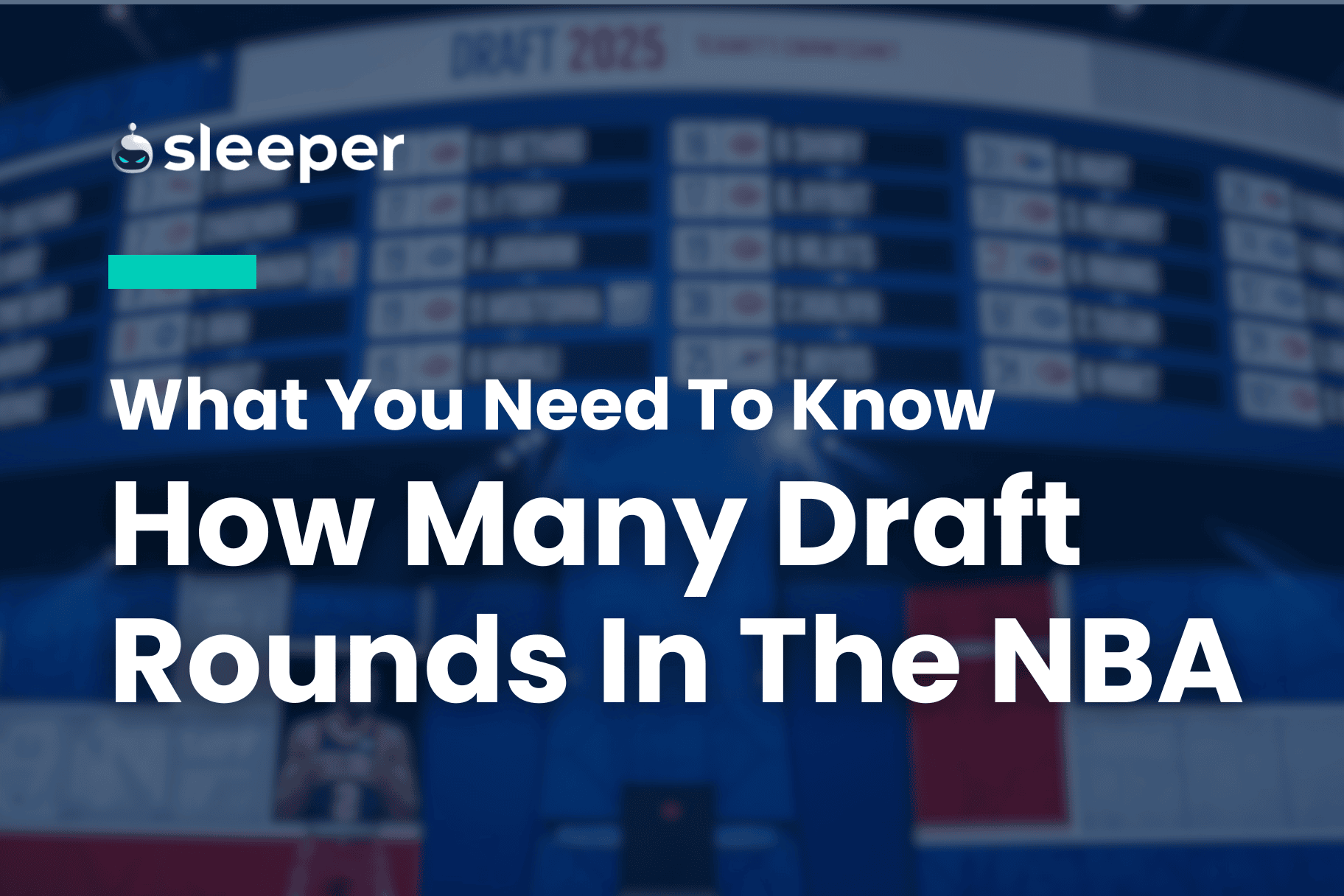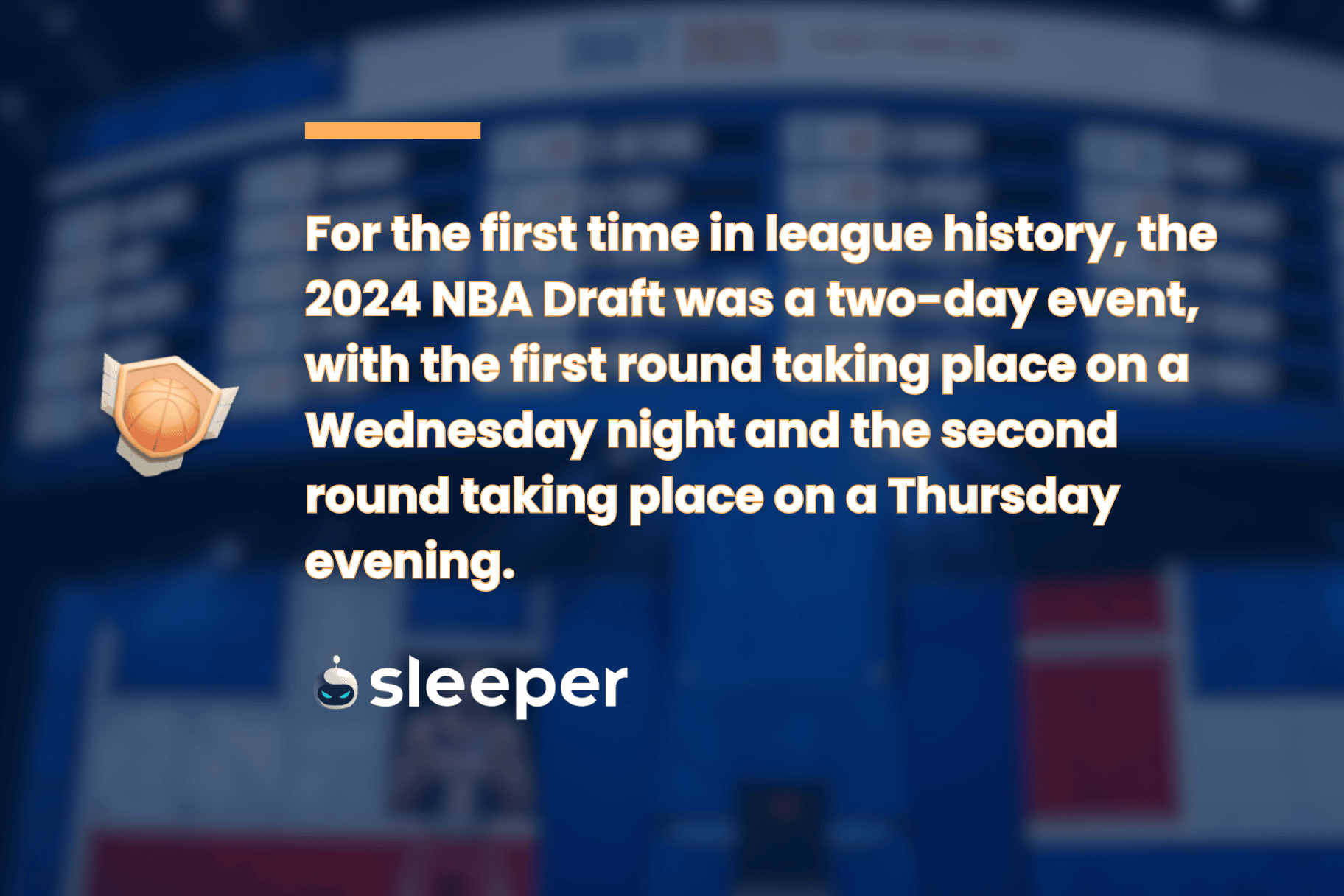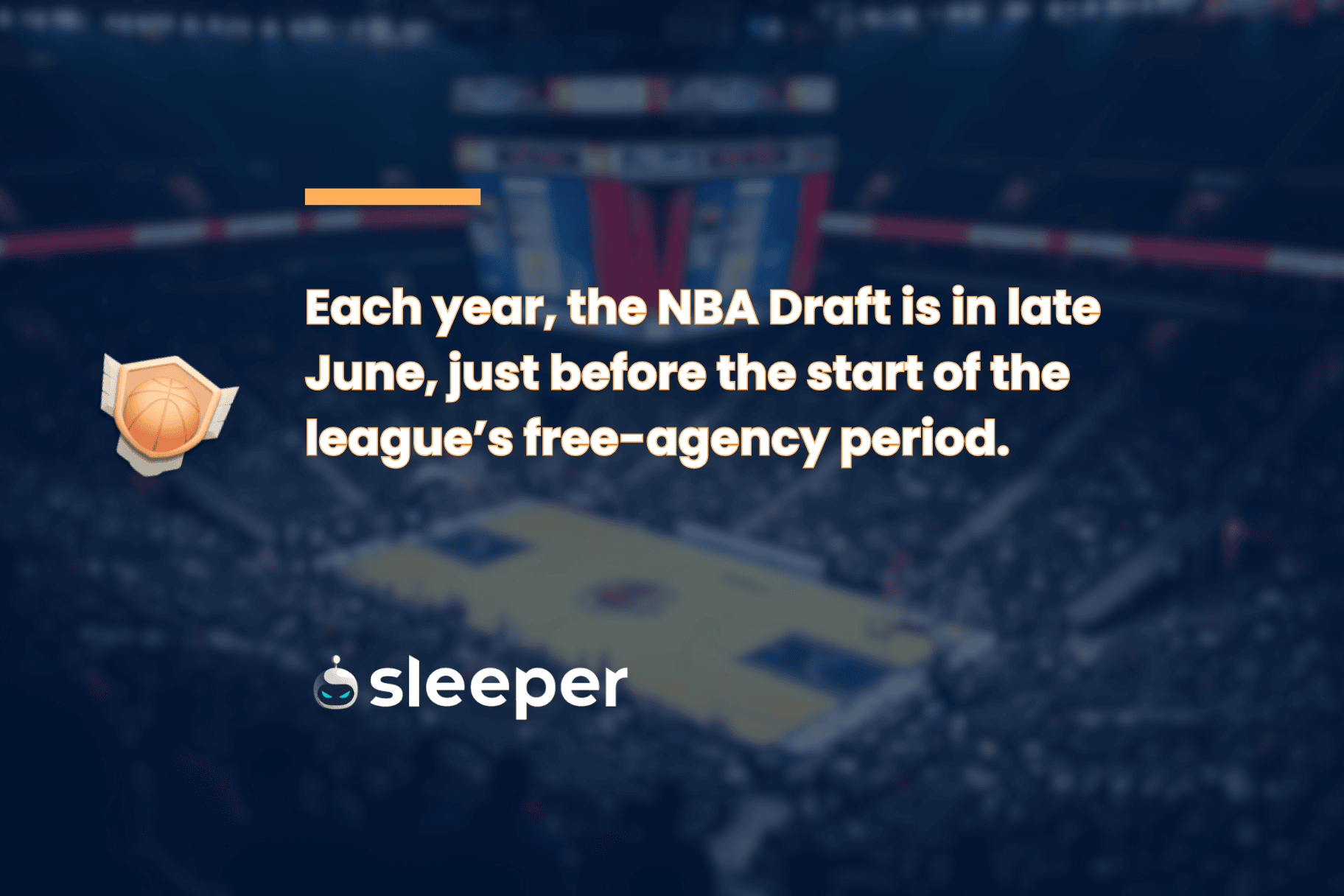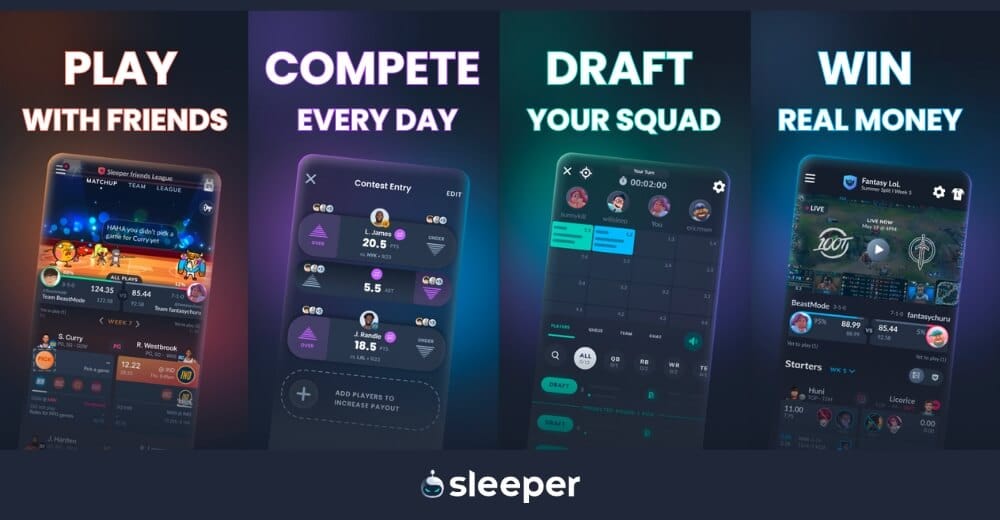Everything you need to know about the NBA Draft, including its origins, how it has evolved over the years, how draft order is determined, number of picks, number of rounds.

The NFL Draft is a seven-round, three-day event that has become extremely popular among sports fans. In 2024, the NBA tried taking a page out of the NFL’s book, copying the multi-day format for the first time in league history.
But how else has the NBA Draft evolved over the years? Here’s everything you need to know about the NBA Draft, including its origins, how the draft order is determined, the number of picks, the number of rounds and more.
How Does the NBA Draft Work?
The NBA Draft is an annual two-round event where all 30 teams have an opportunity to add young prospects to their roster. Teams take turns picking players, with each having five minutes to make selections in the first round and four minutes to do so in the second round. The draft-eligible players in the talent pool are typically college players and international prospects.
The draft is the best way for teams to add promising young players. Transaction periods like the draft and free agency are important, because they give teams opportunities to improve their roster. The draft also promotes parity, because the worst teams pick higher and have the best odds of getting the No. 1 pick, which could lead to a superstar who changes the franchise’s trajectory.
How Many Rounds Are In the NBA Draft and How Has It Evolved?
The current iteration of the NBA Draft has two rounds. For the first time in league history, the 2024 NBA Draft was a two-day event, with the first round taking place on a Wednesday night and the second round taking place on a Thursday evening.
However, the draft hasn’t always been two rounds.
In the 1960s, teams kept picking prospects until they ran out of viable players in the talent pool. Some of these drafts lasted as long as 21 rounds. Then, in the 1970s, the NBA changed the draft to 10 rounds. The league shortened the draft again in 1985, this time limiting it to seven rounds, and once again in 1988, dropping it to three. Finally, in 1989, the league settled on the current two-round setup.

How Is the NBA Draft Order Determined?
The first four picks in each NBA Draft are determined by the annual NBA Draft Lottery. This is a random lottery drawing in which the 14 teams that didn’t qualify for the playoffs have a chance to land the No. 1 overall pick.
All 14 teams are assigned odds for winning the top pick based on their regular-season record, with the worst teams getting the best odds. After the drawing determines the first four picks, the rest of the draft order is then set based on the teams' regular-season records. The team with the worst record receives no worse than the fifth pick.
The lottery can be prone to some wild outcomes. During the 2024 NBA Draft Lottery, the Detroit Pistons (14% odds), Washington Wizards (14%), and Charlotte Hornets (14%) had the best odds of getting the No. 1 overall pick. However, the Atlanta Hawks ultimately won the top pick despite having the 10th-best odds (3%).
How Many Picks Are In the NBA Draft?
There are 60 picks in the NBA Draft. Before any trades, all 30 teams have a first-round pick and a second-round pick.
Back in the 1960s and 1970s, when the NBA Draft featured 10 rounds, teams had significantly more picks. Nowadays, every player who isn’t drafted becomes an undrafted free agent, and all are free to sign with any team.
In some years, there are slightly fewer picks because the NBA can force teams to forfeit a draft pick if they are caught breaking the rules. For example, the 2022 NBA Draft only had 58 picks. That’s because the Miami Heat and Chicago Bulls each had to forfeit a second-round pick after an NBA investigation determined they violated the league’s tampering rules by communicating with players prior to the start of free agency.
See also: 10 Biggest NBA Draft Busts
When Is the NBA Draft?
Each year, the NBA Draft is in late June, just before the start of the league’s free-agency period.

How The NBA Draft Is Related to Fantasy Basketball
Fantasy basketball managers should pay attention to the NBA Draft, because it’s important to learn about the incoming rookie class, where these players will be playing and what kind of role they’ll have on their respective teams.
In dynasty leagues, rookies are extremely important since the players you draft stay on your roster forever (unless you trade or cut them). The annual rookie draft is the best way to improve your team and build for the future. If you can identify a superstar talent when he’s just a rookie, you’ll get a stud at a discount and he might stay on your team for more than a decade.
In redraft leagues, rookies often fall in the draft and become great value picks, so managers who are knowledgeable about the incoming draft class have an advantage. In every draft, there are a number of rookies who end up becoming significant contributors right away and making an impact in fantasy basketball.
Also, whenever a rookie is poised to take on a big role, it usually means at least one of their teammates will be losing playing time or touches. Staying informed on the key rookies and their respective roles will also help you know which veterans to avoid, because they may lose minutes or see their usage rate take a hit due to their first-year teammate.
Related: How to Dominate in Fantasy Basketball

Frequently Asked Questions
Can teams trade their draft picks?
Yes, teams are allowed to trade their draft picks, and it happens all the time. Many teams swap draft picks or package their picks with players as part of a larger trade, and these draft-night trades are one of the reasons why the draft is so much fun.
However, there are certain limitations. The Stepien Rule states that a team can't trade its first-round pick in back-to-back years. Also, teams cannot trade draft picks that are more than seven years out.
Who are the biggest NBA Draft steals?
Let’s examine some of the most astute picks and biggest steals in recent NBA Draft history.
Nikola Jokic was selected No. 41 overall in the 2014 NBA Draft. Jokic is now an NBA champion, three-time NBA Most Valuable Player and the lowest-drafted MVP in league history. Every other MVP was a top-15 pick. The Denver Nuggets uncovered a diamond in the rough, and it continues to pay off for them.
Two-time NBA MVP, Defensive Player of the Year, and NBA champion Giannis Antetokounmpo was drafted No. 15 overall in the 2013 NBA Draft. He was considered a raw project since he was really skinny and played against weak competition in Greece. However, with NBA resources after joining the Milwaukee Bucks, he bulked up and became a superstar.
NBA legend Kobe Bryant fell to No. 13 overall in the 1996 NBA Draft since he was the first guard to enter the NBA straight out of high school. The Charlotte Hornets drafted Bryant and then dealt him to the Los Angeles Lakers in exchange for Vlade Divac. Bryant became a five-time NBA champion, NBA MVP and one of the game's all-time greats.
Isaiah Thomas was picked No. 60 overall (earning the title “Mr. Irrelevant”) in the 2011 NBA Draft, but he went on to become a prolific scorer and two-time All-Star with the Boston Celtics. The 5’9” guard became a fan favorite, averaging nearly 30 points per game during his prime.
Can players return to college if they don’t get picked in the NBA Draft?
Yes, players can return to school if they go undrafted in the NBA Draft.
For years, this wasn’t the case. Under the previous regulations, players who went undrafted couldn’t return to their respective schools and resume their collegiate careers. If they hired an NBA agent at any point during the pre-draft process or stayed in the draft after the withdrawal deadline, they forfeited their remaining eligibility.
However, in 2023, the NCAA changed the rules to state: “College basketball players who request an Undergraduate Advisory Committee evaluation, participate in the NBA combine, and aren’t drafted can return to school as long as they notify their athletics director of their intent by 5 p.m. the Monday after the draft.”
Take Your NBA Draft Knowledge to Sleeper
That’s everything you need to know about the NBA Draft! If you’re interested in taking this knowledge and applying it to fantasy basketball, Sleeper has you covered, and you can sign up on the website or by downloading the app.
If you’d like to start a season-long fantasy basketball league, there’s no better platform than Sleeper. It features exclusive features like Lock-In mode, Game-Pick mode, voice and text chat, custom scoring, in-depth notes for research, custom playoff settings, no ads, multi-team trades, every type of league (including keeper and dynasty), weekly league reports, live scoring, each player's transaction history and more.
If you prefer daily fantasy sports, then give Sleeper Picks a try. You can maximize your winnings up to 100x with just a few selections and follow live gamecasts as you embark on a quest for cash prizes.




